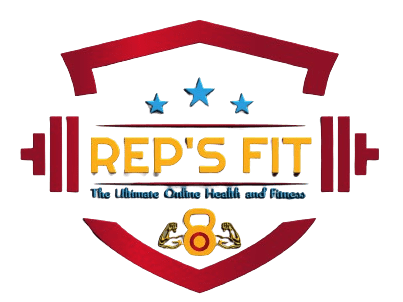Transform Your Workout: Proven Strategies to Boost Fitness Results
1. Start with a Clear Vision of Your Goals
Before diving into a workout program, define what you truly want to achieve. Is your goal to build strength, enhance stamina, shed some pounds, or boost flexibility? When you set specific, measurable goals, it’s easier to create a tailored workout plan that delivers.
Tip: Try writing down a SMART goal (Specific, Measurable, Achievable, Relevant, Time-bound) to keep yourself focused. For example, “I want to increase my bench press by 15 pounds in the next 3 months” is a clear, actionable target.
2. Harness the Power of Progressive Overload
For continuous improvement, it’s essential to keep challenging your muscles. This concept, known as “progressive overload,” means gradually increasing the demands on your body. Over time, this approach leads to strength gains, muscle growth, and better overall fitness.
How to Apply It:
- Strength Training: Increase the weight, reps, or sets each week. For example, if you’re lifting 20 lbs, try increasing to 22 lbs or adding another set.
- Cardio: Boost your speed, incline, or time gradually. Add one minute to each session or increase the treadmill incline slightly every few workouts.
Bonus: Track your progress weekly to stay motivated and see the gradual improvements!
3. Incorporate High-Intensity Interval Training (HIIT) for Efficiency
HIIT is perfect for people with busy schedules who want maximum results in minimal time. Alternating between intense, quick bursts and short rest periods, HIIT not only burns calories but also enhances endurance and metabolic rate.
Sample HIIT Workout:
- Sprint for 30 seconds, then walk for 60 seconds. Repeat for 15 minutes.
- Jump squats for 20 seconds, rest for 10 seconds, and repeat with push-ups for 20 seconds, resting for 10 seconds. Do this for 5 rounds.
4. Engage Multiple Muscle Groups with Compound Movements
Compound exercises, such as squats, lunges, and deadlifts, work multiple muscle groups simultaneously, making them highly efficient for building strength and burning calories. They also mimic real-life movements, which improves functionality and helps prevent injuries.
Top Compound Exercises to Try:
- Squats: Work your quads, glutes, hamstrings, and core.
- Deadlifts: Great for your back, glutes, and hamstrings.
- Push-Ups: An upper body staple, working chest, shoulders, and core.
5. Cross-Train to Prevent Plateaus and Keep Workouts Fun
Cross-training combines different exercise types to keep your workouts fresh, reduce injury risk, and challenge your body in new ways. If your routine is mostly weightlifting, consider adding yoga or swimming for a well-rounded regimen that balances strength, flexibility, and endurance.
Ideas for Cross-Training:
- Strength days (weightlifting, resistance bands)
- Flexibility days (yoga, Pilates)
- Cardio days (running, cycling, swimming)
This variety keeps your body constantly adapting, preventing plateaus and making workouts more enjoyable!
6. Add Functional Movements for Real-World Strength
Functional training focuses on movements that mimic daily activities—bending, twisting, lifting—strengthening your body to handle real-life tasks more effectively. Adding functional movements to your workouts can help improve coordination, mobility, and balance, making it perfect for long-term fitness.
Examples of Functional Movements:
- Kettlebell Swings: Boosts core and lower body strength.
- Medicine Ball Throws: Improves explosive power and coordination.
- Farmer’s Walks: Excellent for grip strength and core stability.
7. Make Recovery a Priority with Active Rest Days
Recovery is just as crucial as the workouts themselves. Giving your body time to rest helps muscles repair and grow stronger. Schedule one or two active recovery days each week with light activities like walking, stretching, or yoga to promote blood flow and aid in recovery.
Active Recovery Ideas:
- Gentle yoga to improve flexibility and mental clarity.
- Walking or easy cycling to keep moving while letting muscles heal.
- Foam rolling or stretching to alleviate soreness and prevent stiffness.
8. Fuel Your Progress with Balanced Nutrition
Exercise and nutrition go hand in hand. Supporting your workout efforts with the right foods can enhance your performance and results. Focus on:
- Protein for muscle repair (eggs, chicken, legumes)
- Complex carbs for sustained energy (oats, sweet potatoes, whole grains)
- Healthy fats for cellular repair and hormone balance (avocado, nuts, olive oil)
Stay hydrated, and aim to fuel your body before and after workouts to maximize recovery.
9. Track Your Progress to Stay Motivated and Adjust Accordingly
Logging your workouts, reps, and weights can provide a clear picture of your progress and areas that may need adjustment. Regular tracking helps you see how far you’ve come and keeps you motivated to continue improving.
Tips for Tracking:
- Use a fitness journal or app to log details.
- Take photos or measurements every 4–6 weeks to track visual progress.
- Reflect on how you feel each week, noting improvements in energy, mood, or performance.
10. Consult with Experts for Personalized Guidance
When it comes to making transformative progress, expert guidance can make all the difference. A certified trainer can help you adjust your form, create a program tailored to your goals, and provide motivation and accountability. Consulting with a professional ensures you’re on the right path and helps prevent injuries.
Ready to Transform Your Fitness? REP’s Fit Has Your Back!
At REP’s Fit, we understand that fitness isn’t one-size-fits-all. Our high-performance training facilities, expert coaches, and personalized guidance are here to support your unique journey. Whether you’re just starting or looking to elevate your routine, we offer customized programs, expert advice, and a motivating community to help you reach your goals.
Join Us at REP’s Fit Today!
Transform your workouts, boost your fitness results, and take the first step toward your best self with REP’s Fit.







0 Comments
The Common category includes then following block: Paragraph, image, heading, latest gallery, quote, audio, cover, video. The paragraphs block is the default block type. This is should not have any alignment of any kind. Category and then there are many things to following blocks and many more.
The Common category includes then following block: Paragraph, image, heading, latest gallery, quote, audio, cover, video. The paragraphs block is the default block type. This is should not have any alignment of any kind.
The Common category includes then following block: Paragraph, image, heading, latest gallery, quote, audio, cover, video. The paragraphs block is the default block type. This is should not have any alignment of any kind. Category and then there are many things too following blocks and many more.